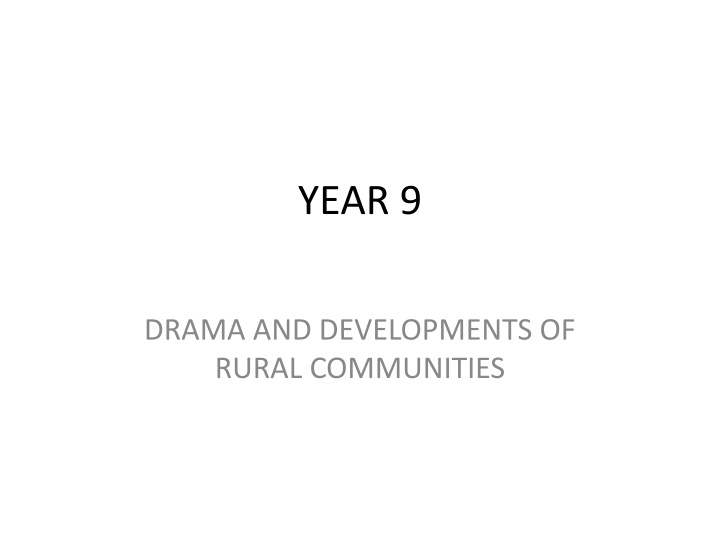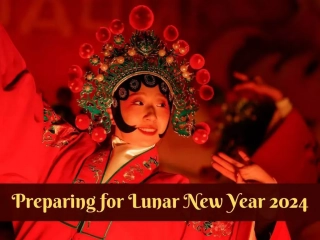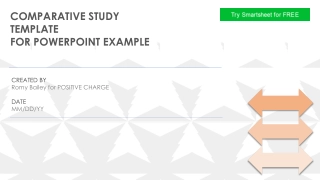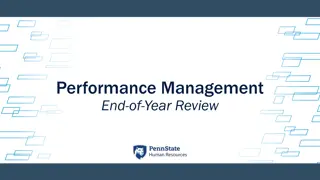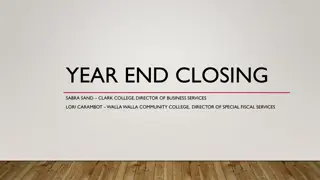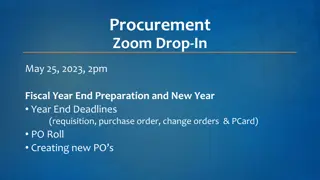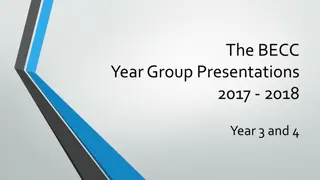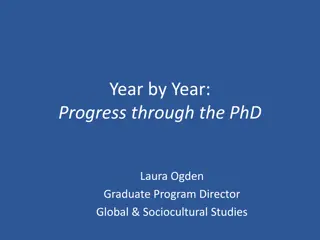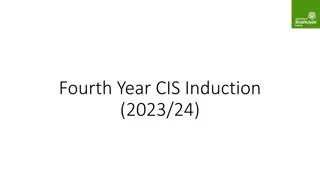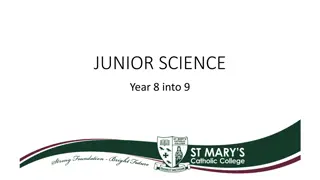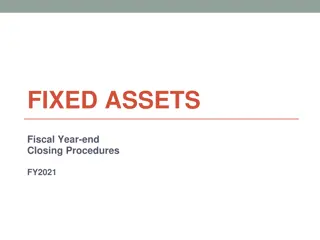YEAR 9
the significant role of drama in rural communities for educational development, advocacy, therapy, and more. Understand the functions of drama and its impact on rural development through educational propaganda, encouraging participation, and therapy. Delve into the process of choreography and the diverse sources of inspiration for creating impactful dance performances.
Download Presentation

Please find below an Image/Link to download the presentation.
The content on the website is provided AS IS for your information and personal use only. It may not be sold, licensed, or shared on other websites without obtaining consent from the author.If you encounter any issues during the download, it is possible that the publisher has removed the file from their server.
You are allowed to download the files provided on this website for personal or commercial use, subject to the condition that they are used lawfully. All files are the property of their respective owners.
The content on the website is provided AS IS for your information and personal use only. It may not be sold, licensed, or shared on other websites without obtaining consent from the author.
E N D
Presentation Transcript
YEAR 9 DRAMA AND DEVELOPMENTS OF RURAL COMMUNITIES
OBJECTIVES By the end of the lesson, students should be able to; - List four drama development of rural communities - Illustrate the functions of drama - Explain the development of drama on rural communities.
Drama and Educational Development of Rural Communities EDUCATIONAL PROPAGANDA: Government and NGO may use theatre to deliver messages in a top-down approach ENCOURAGING PARTICIPATION: Stories are used to help people to express their understanding what happens to them in their daily lives. ADVOCACY DRAMA: It can provide a way for the audience to participate in the issue raised. THERAPY DRAMA: It can be used as therapy to help deal with trauma and emotional problems.
FUNCTIONS OF DRAMA EDUCATIVE: Drama is like an eye opener INFORMATIVE: It helps communication, creates awareness and sensitize people to understand better. ENTERTAINMENT: It aids satisfaction and pleasure. TOLERANCE: It encourages team work and cooperation among performers. THERAPEUTIC: It reduces patients tension and sometimes gives hope to the hopeless. COOPERATION: It promotes unity among characters in the Drama.
EVALUATION 1 Define drama Itemize and explain the functions of drama Explain the development of drama on rural development.
YEAR 9 PROCESS OF CHOREOGRAPHY
Process of Choreography Ways of Working: Choreographers working in contemporary forms usually develop movement through experimentation and innovation. The resulting work is a highly individual way of speaking through dance. Paul-Andr Fortier is one choreographer who creates in this way. Choreographers working with classical or traditional techniques tend to start with the movement vocabulary of the form as their basic language. Then, depending on the specific vision for the work, they may choose to stay within this structure, or move beyond it.
Process of Choreography Continues Sources of Inspiration: Choreographic inspiration comes from an infinite number of sources. E.g. Images from nature, a poem or story, music, work of visual art Creation of Collaboration: Dance is a collaborative art form. The choreographer holds the creative vision and guides all the elements that go into the making of a dance. Entering the Studio: When a choreographer is ready to enter the studio, he or she may arrive with definite ideas about the movement the dancers will learn.
Elements of Creation: Choreographers investigate and experiment, bringing dance to life through processes of description and demonstration, improvisation, direction and revision. In creating their dances, choreographers draw from a palette of elements, including: Shape Space Timing Dynamics Making Movement: Movement itself, explored purely for innovation, may be the subject of a choreographer's work. He or she might be fascinated with exploring the elements of shape, space, timing and dynamics
Composition :Developing, modifying and selecting dance sequences, and editing the overall work are essential skills in the choreographer's craft. The Final Step: Dance is a live art. In order for a creative process to be complete, the finished work must be presented to an audience
EVALUATION 2 What is choreography? List and explain five processes of choreography
